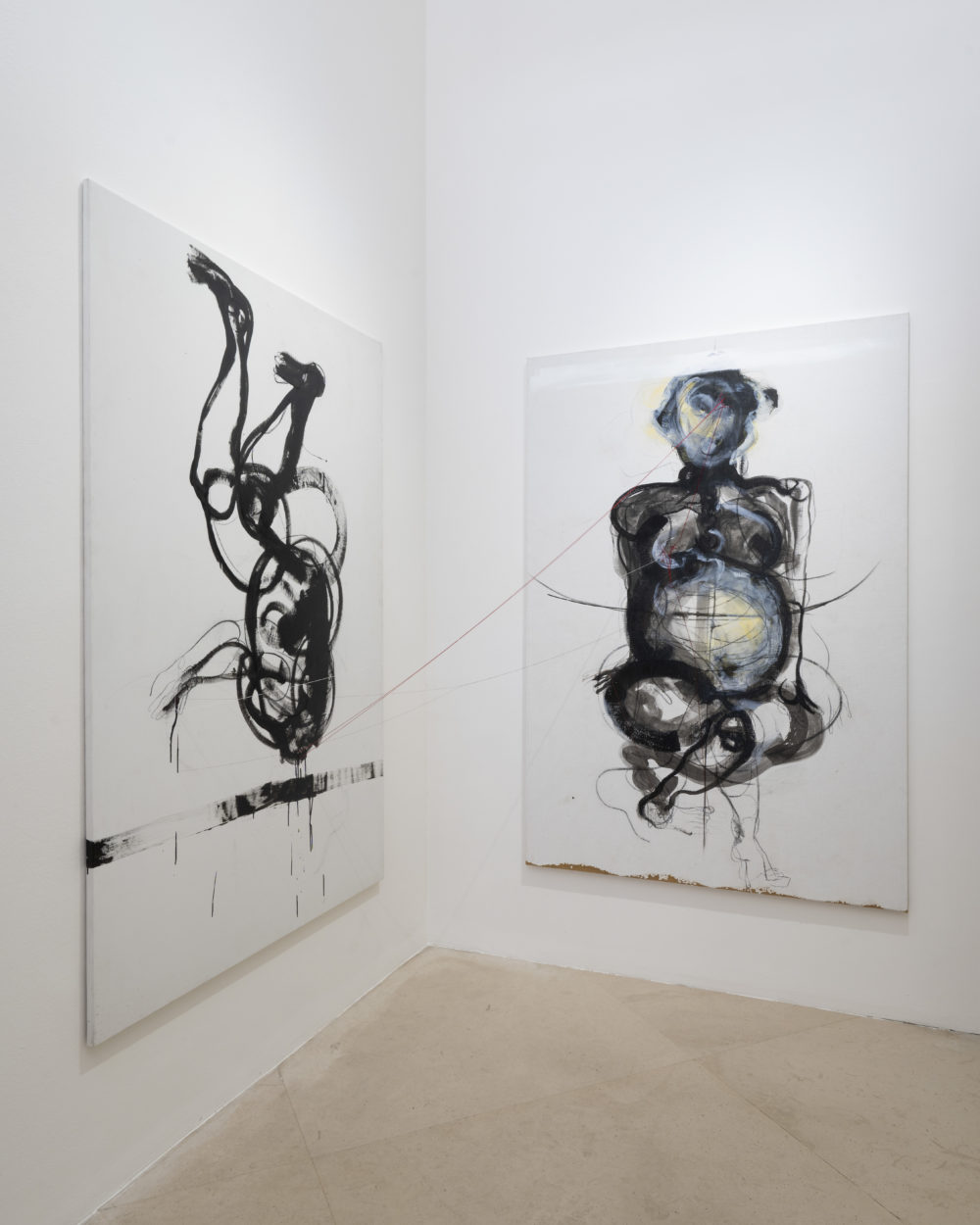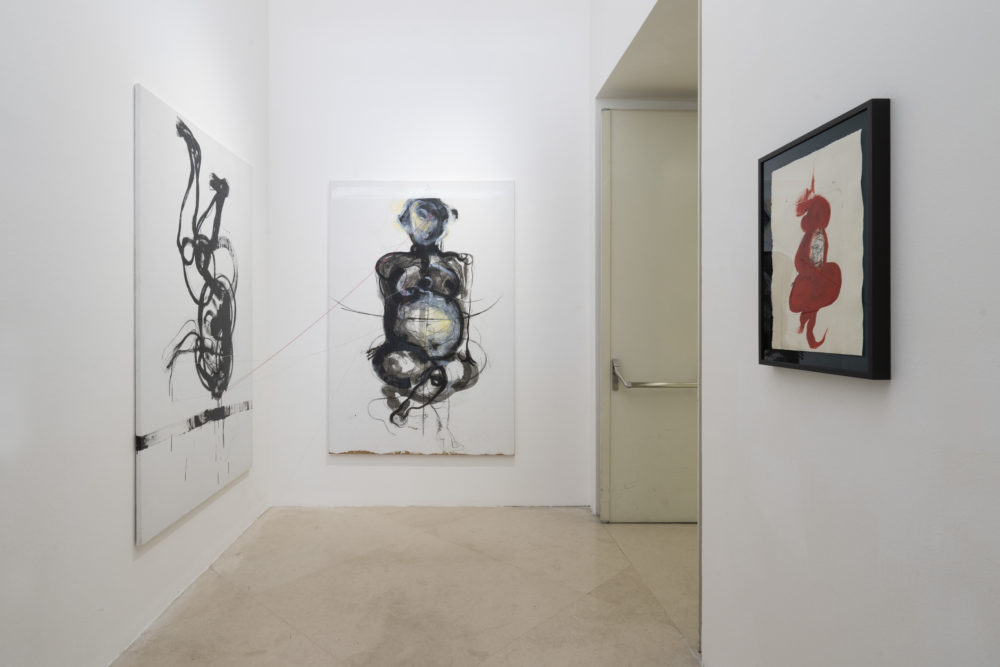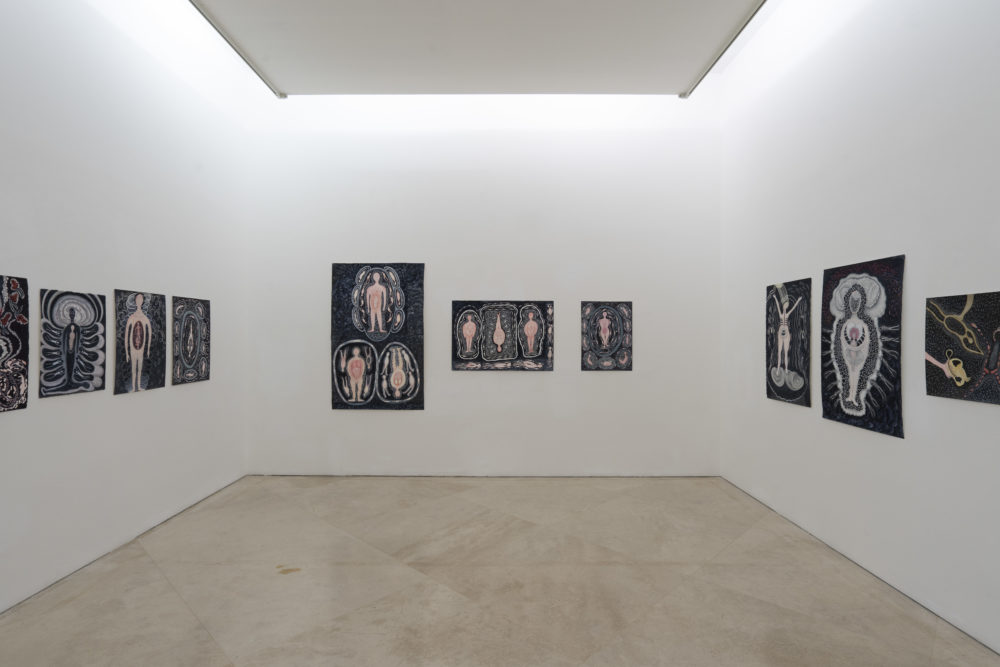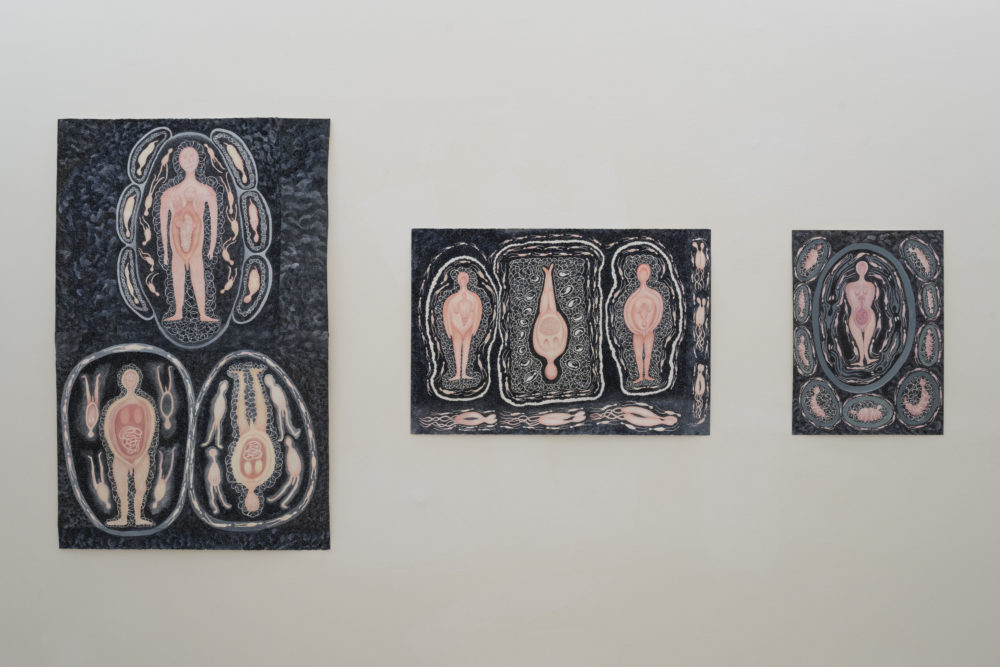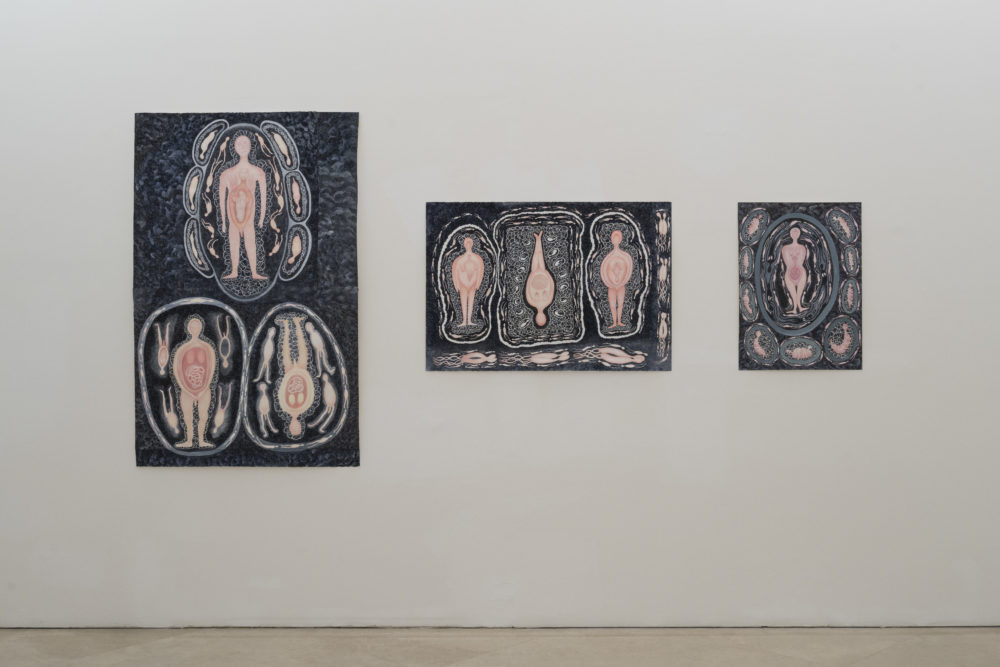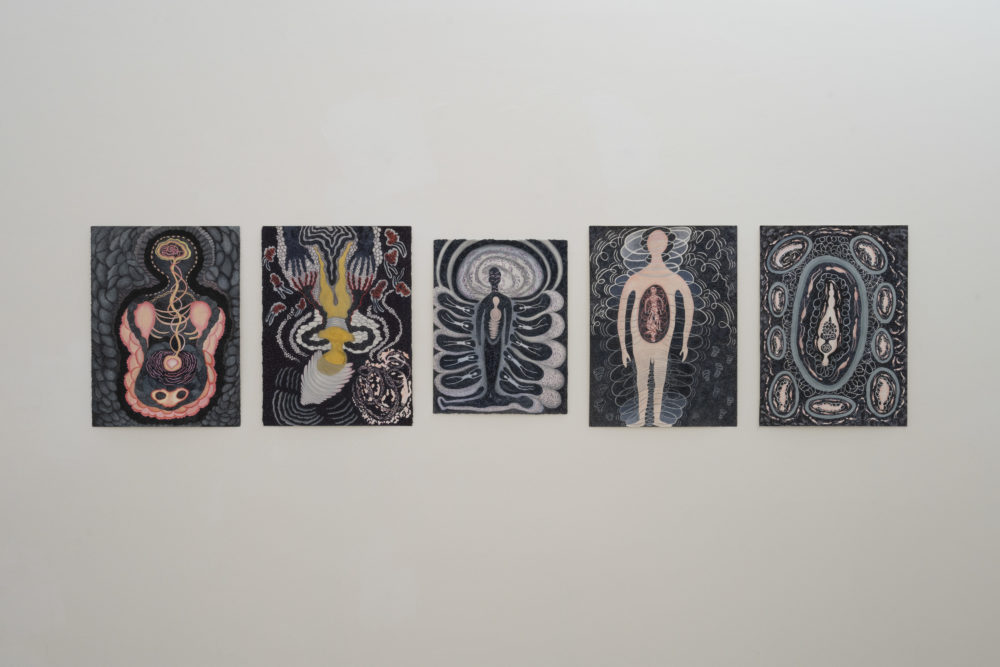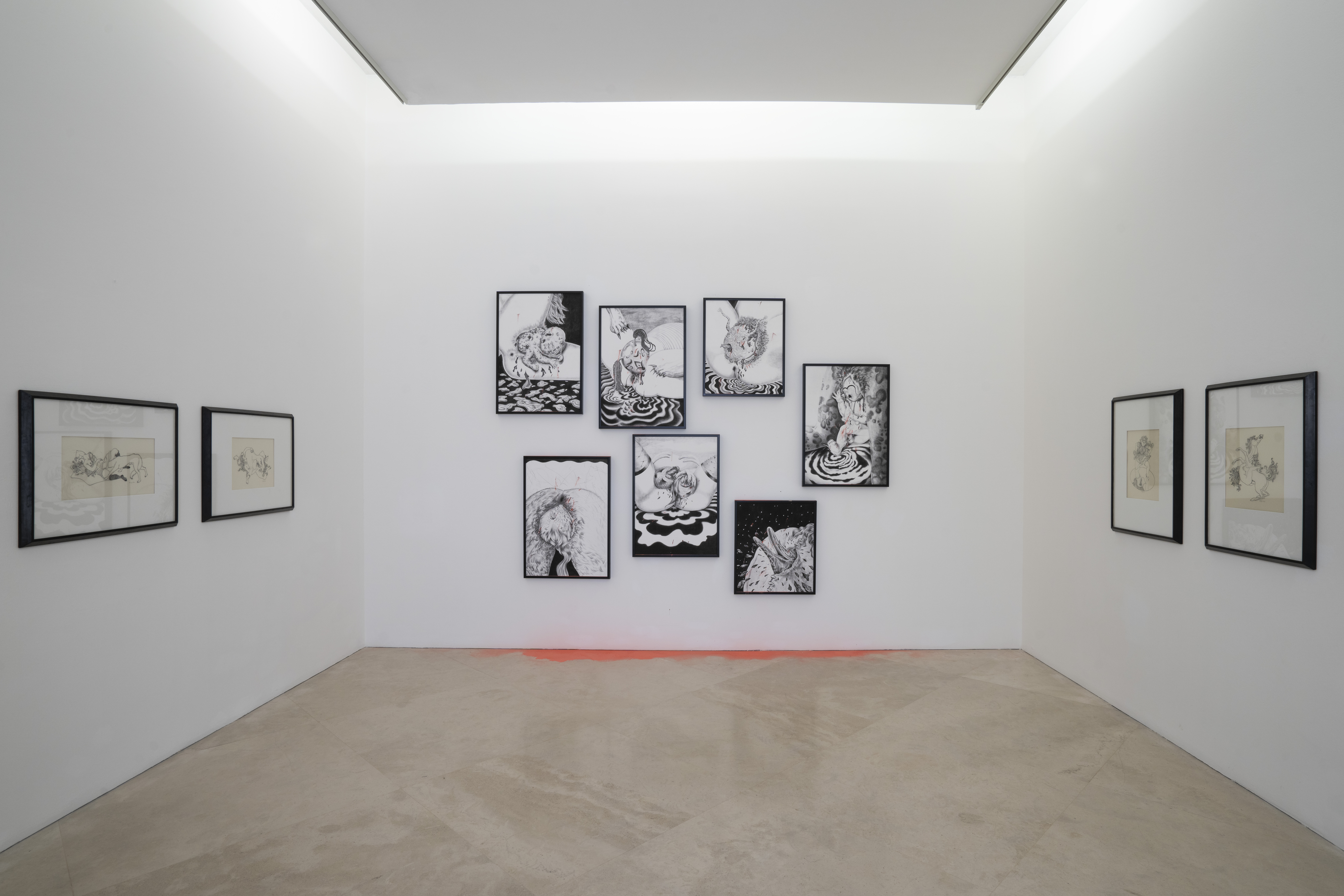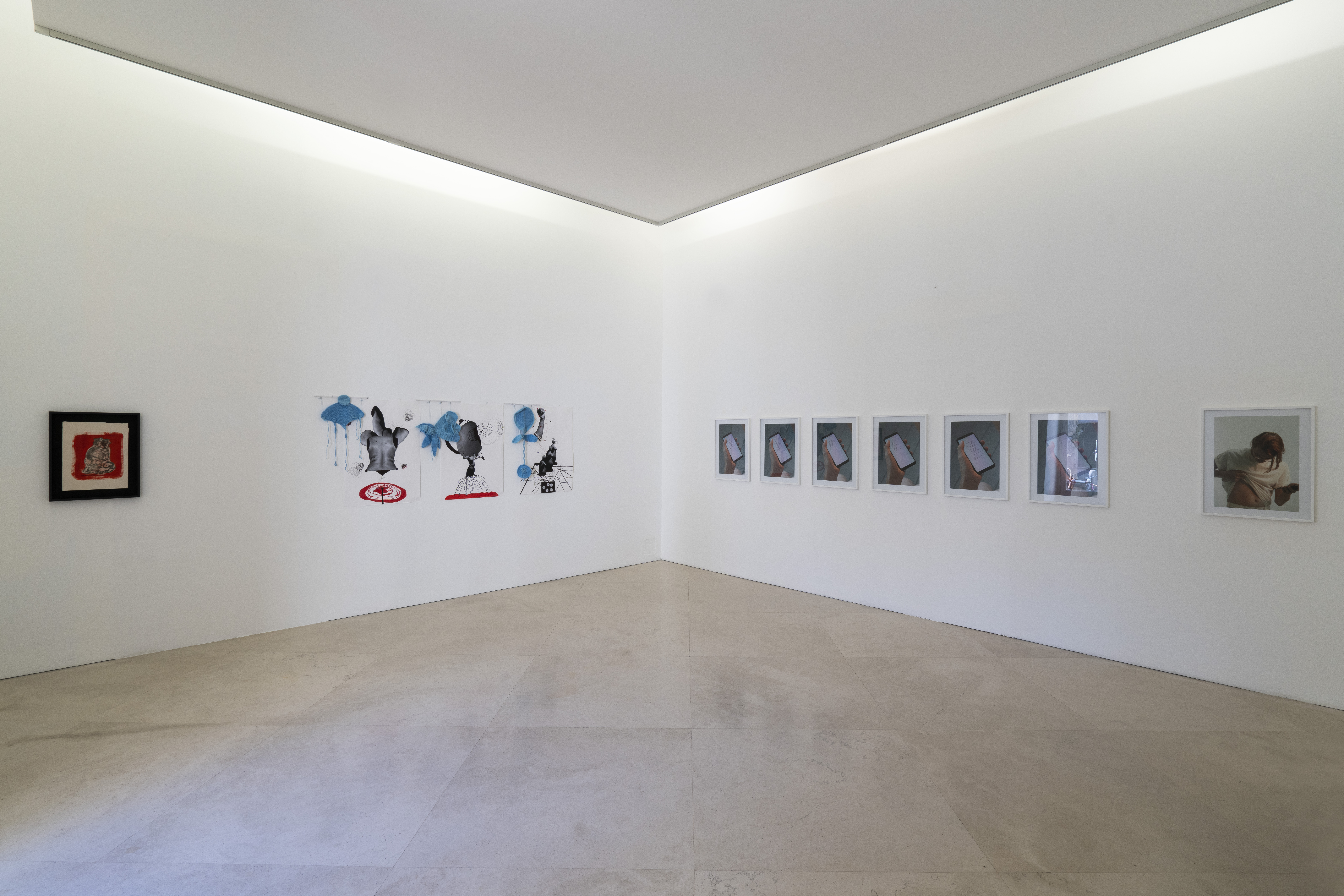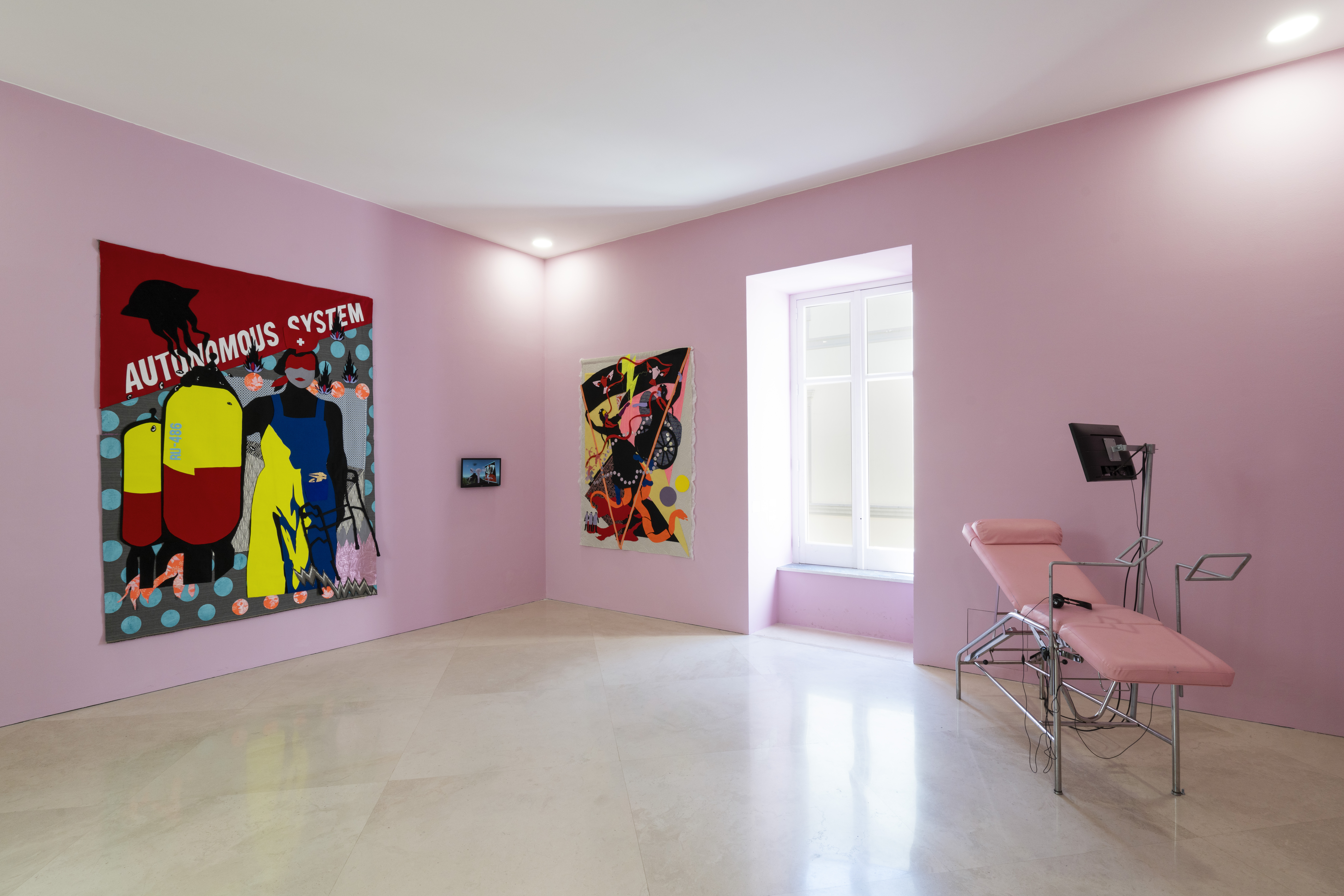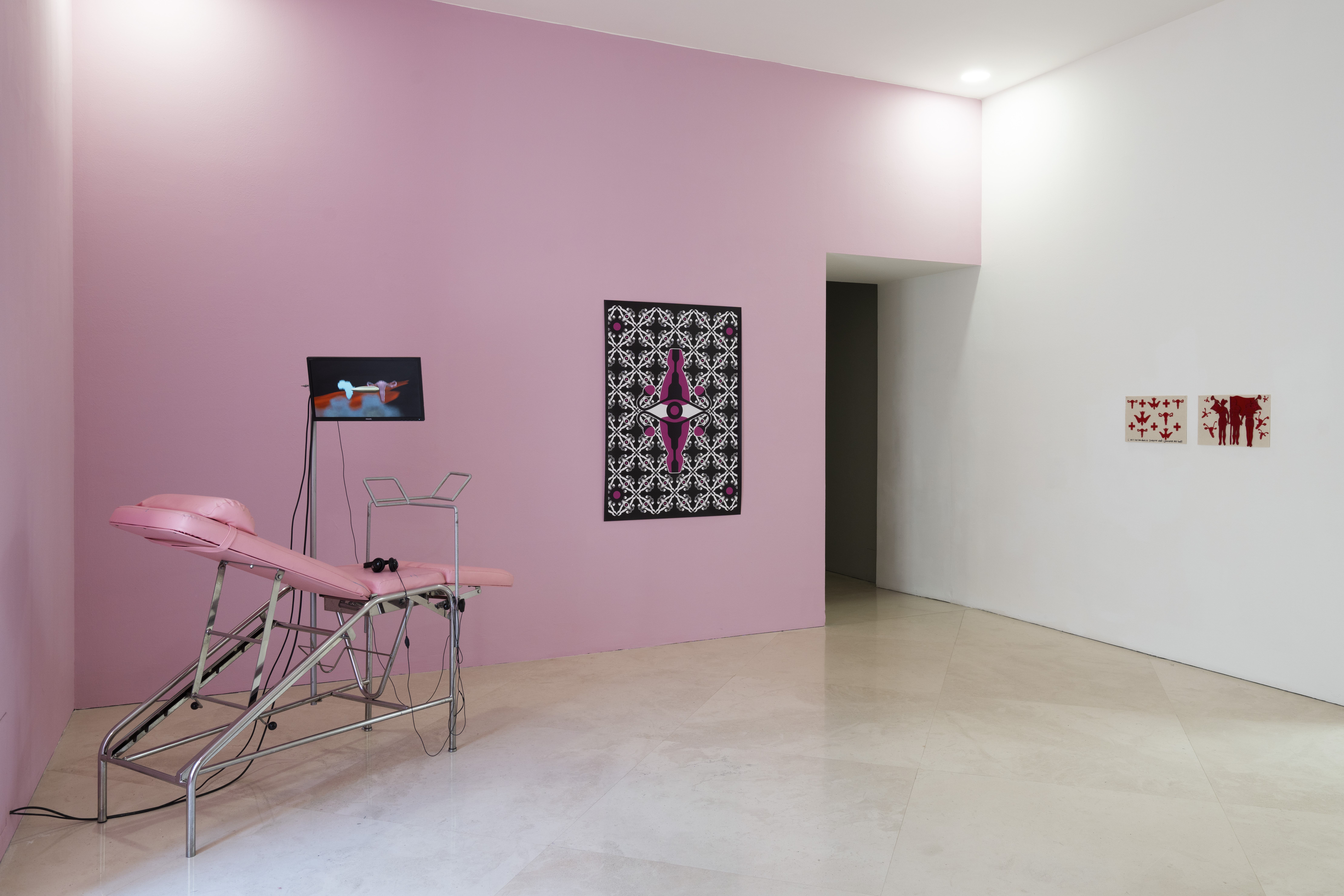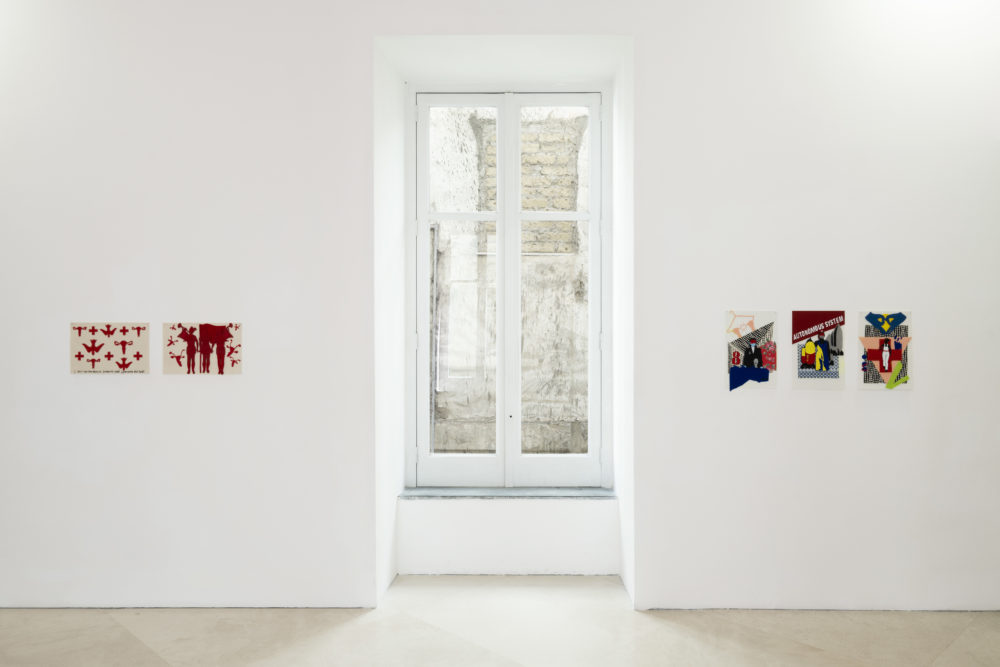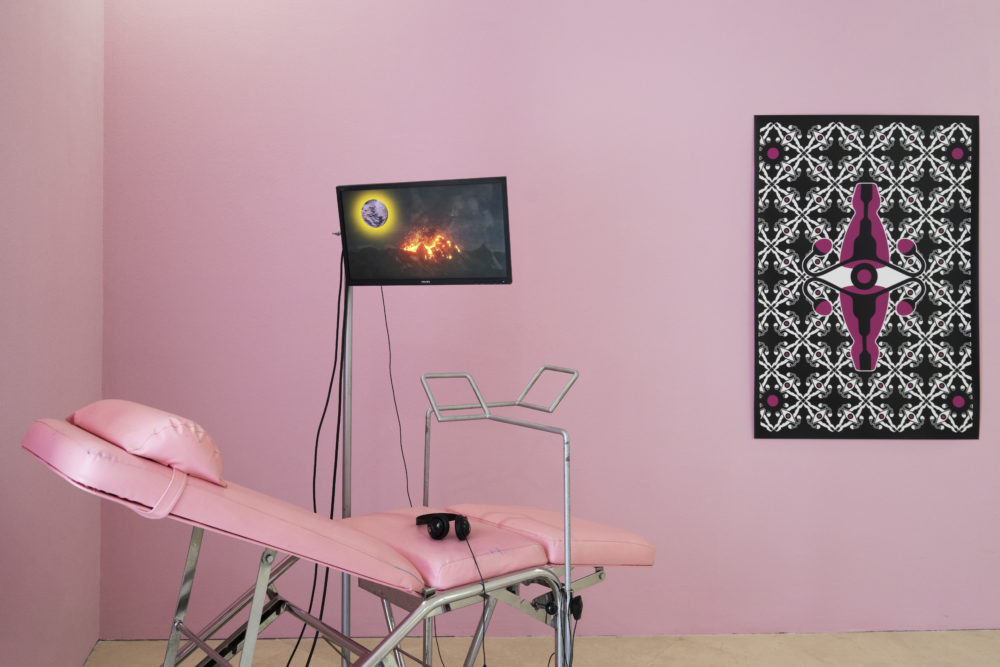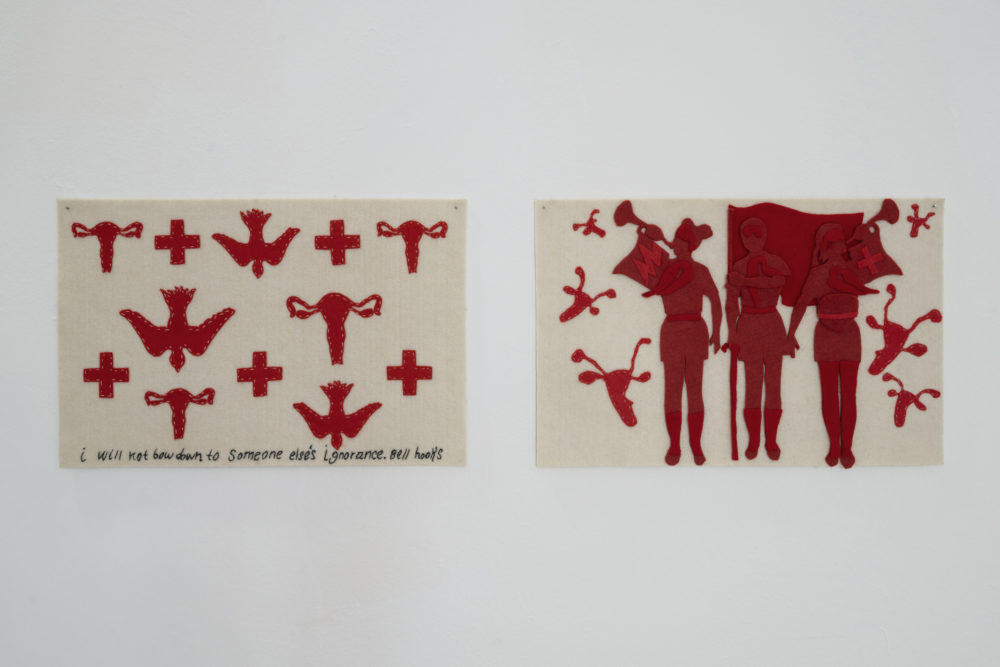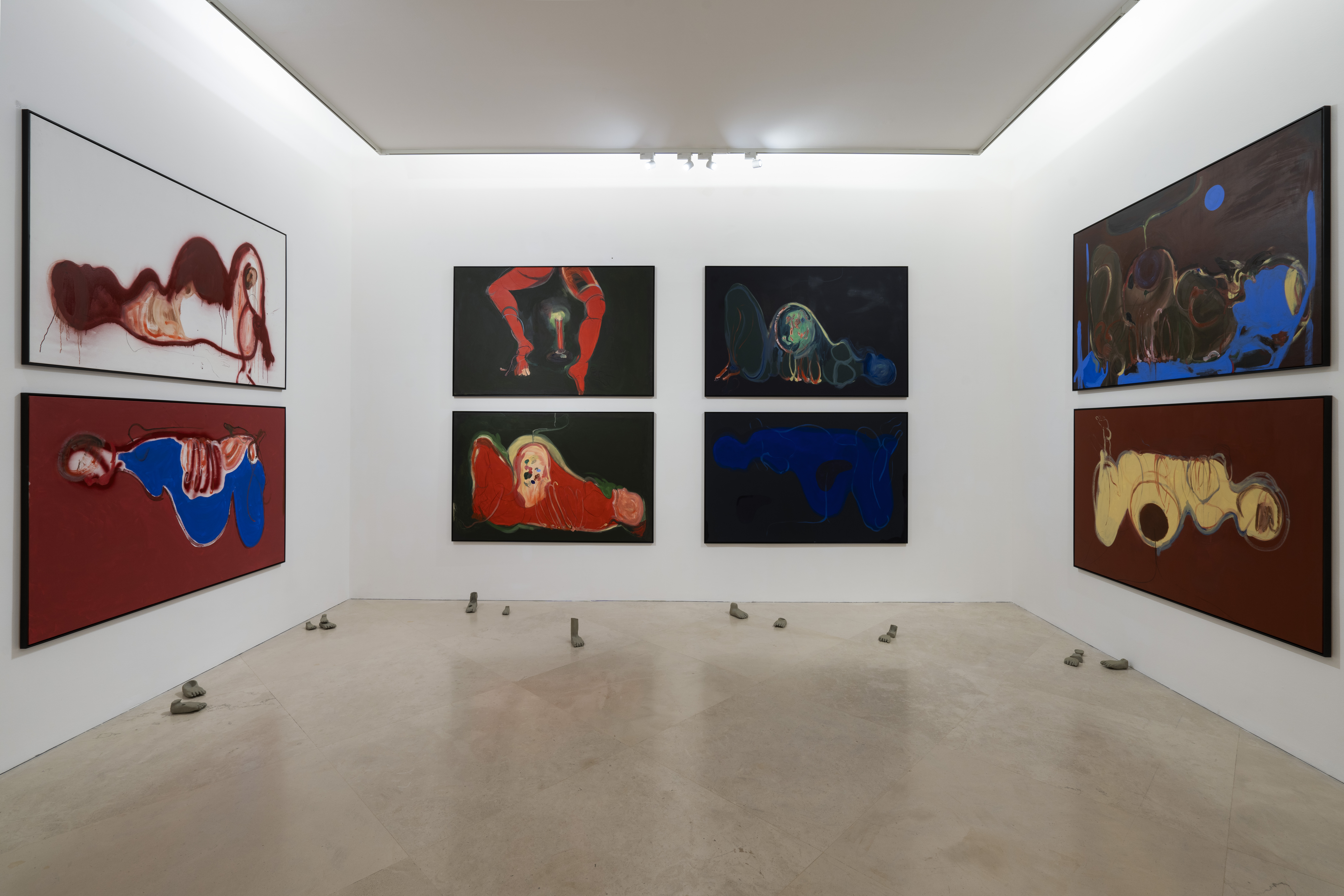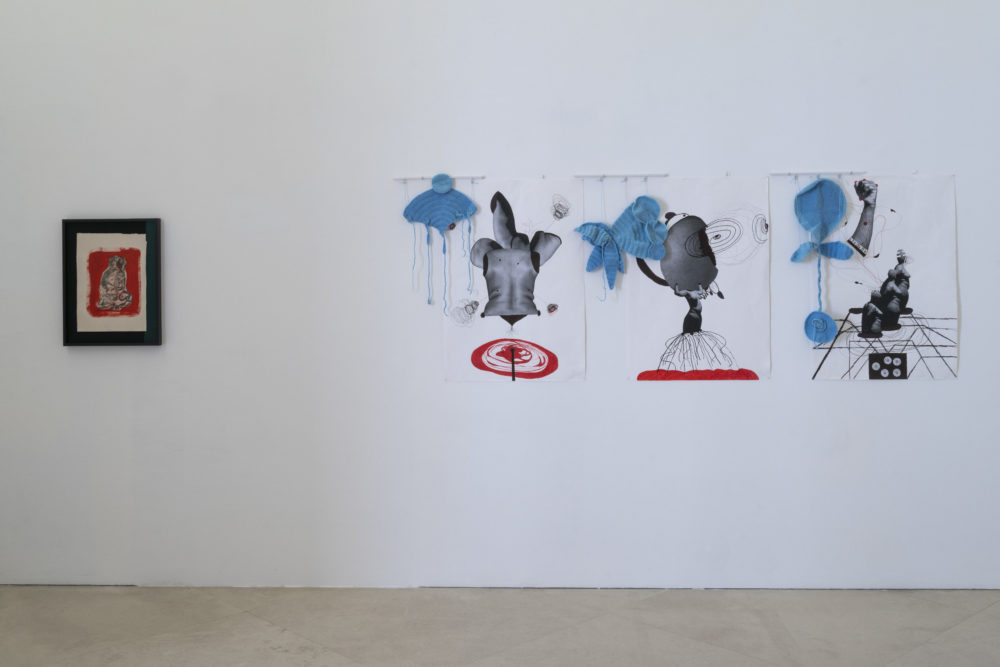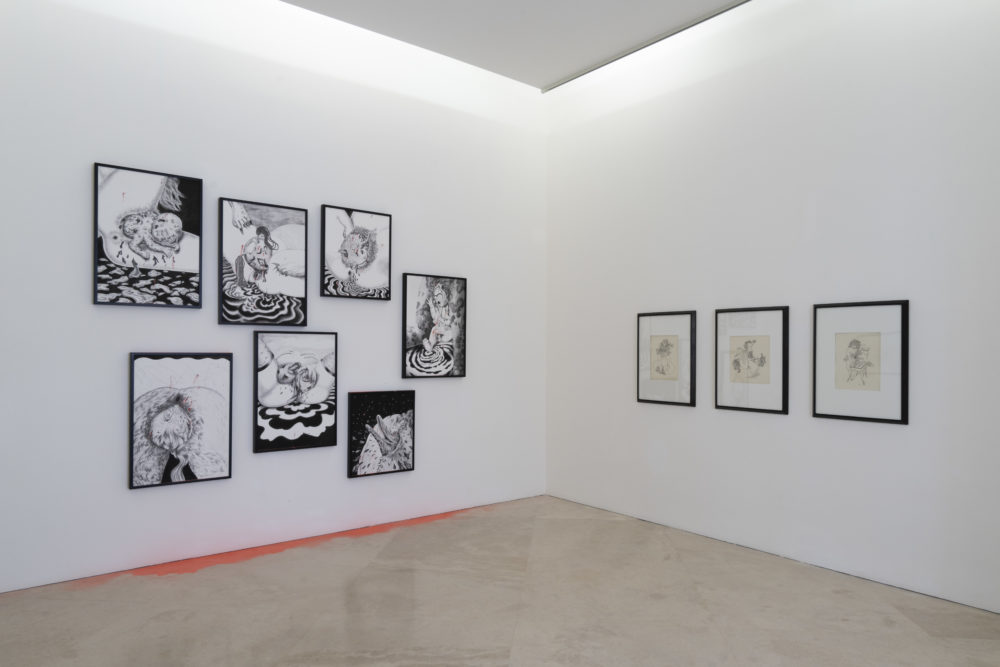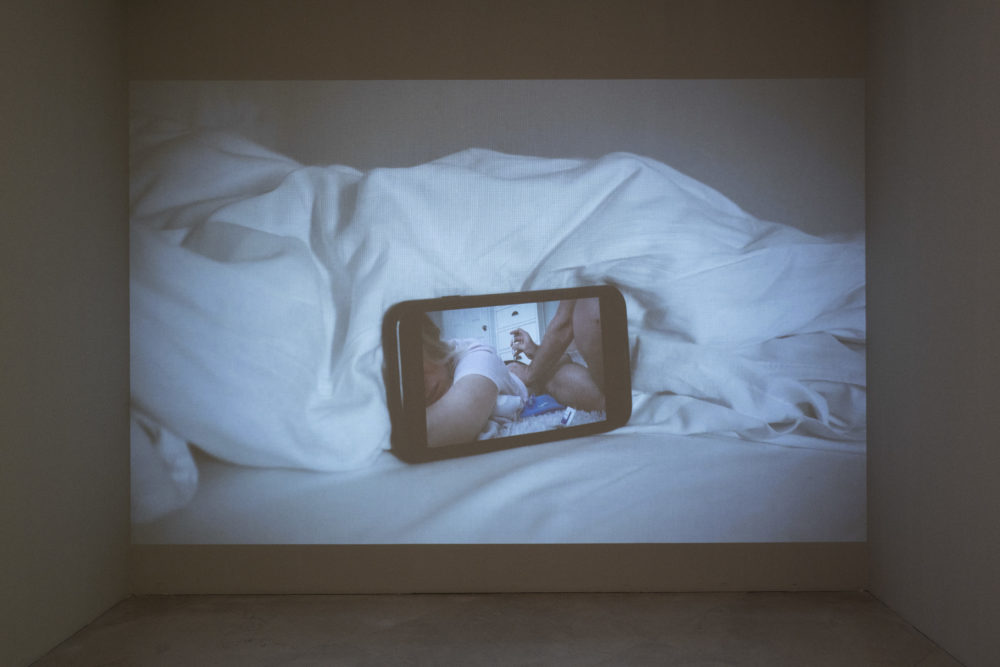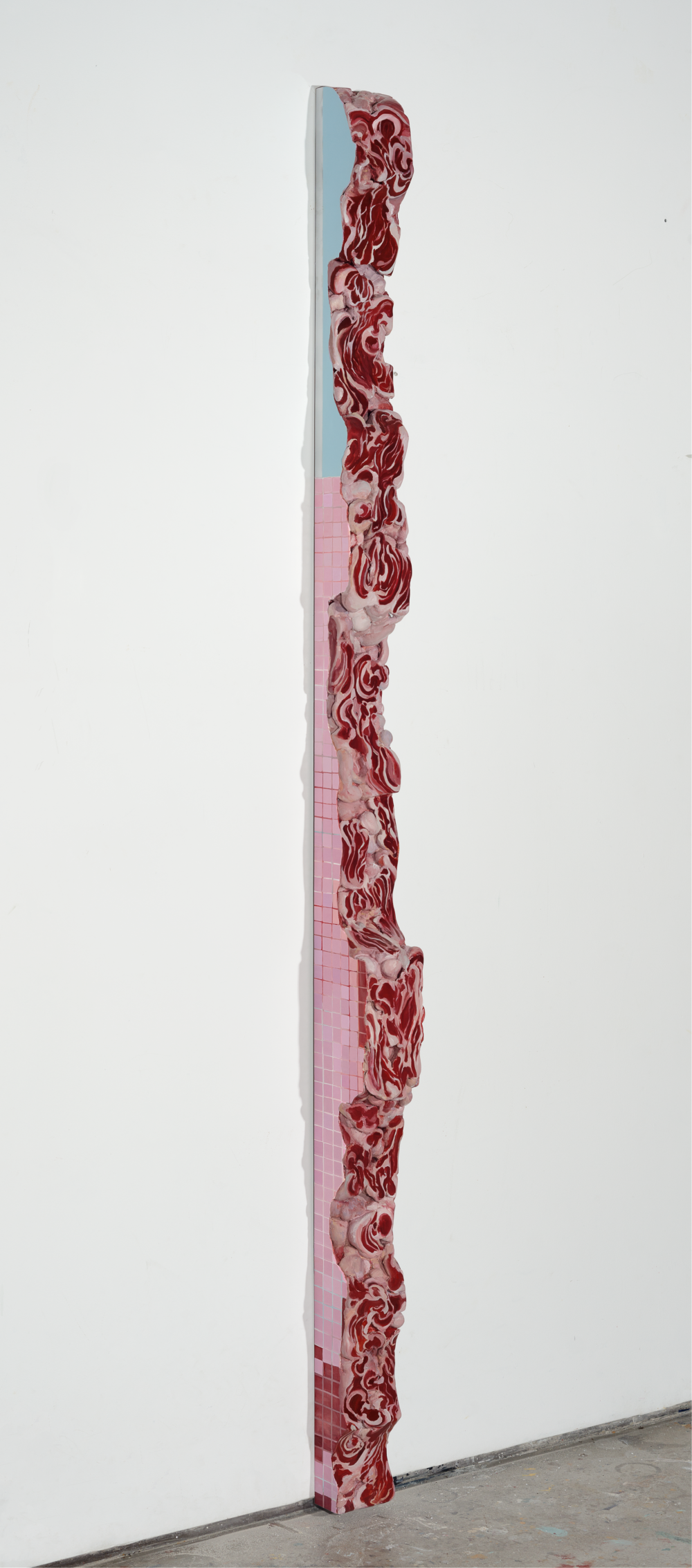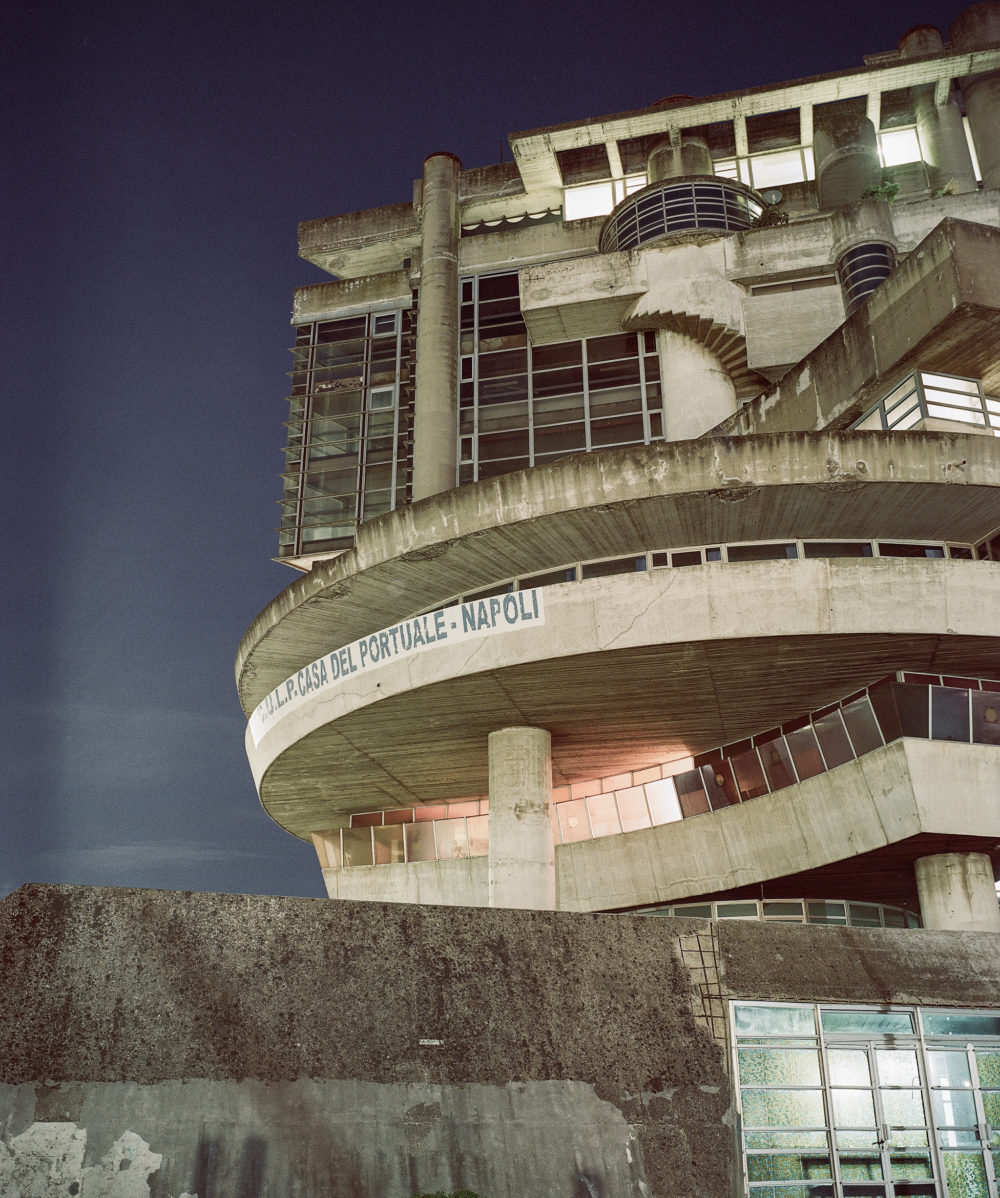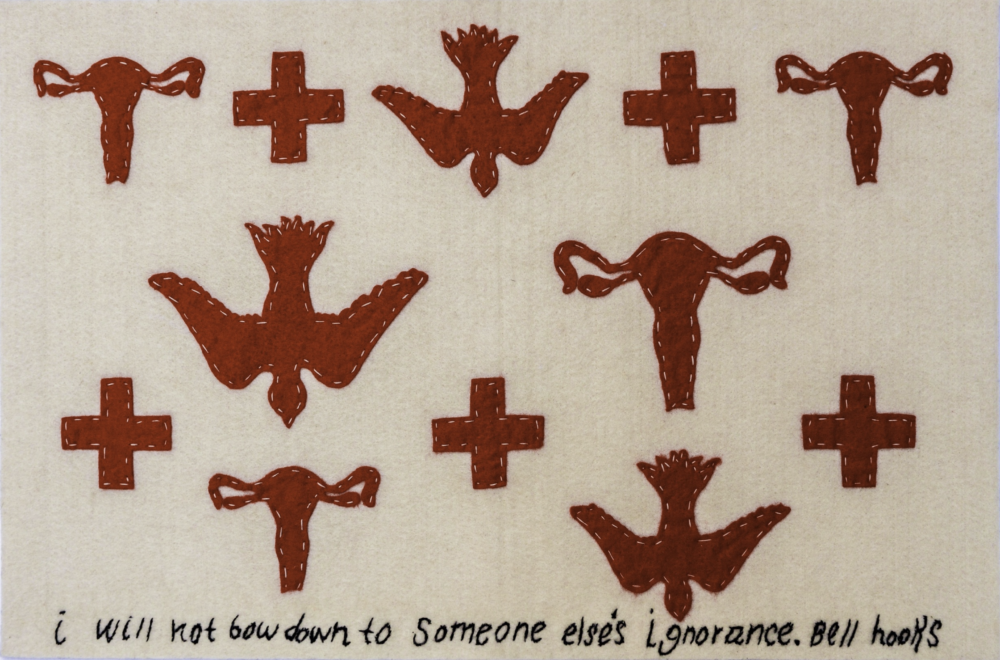
Exhibition
Think Tank: REPRODUCTIVE AGENTS
Curated by Florencia Cherñajovsky
26.02 — 01.05.2023
Opening 25.02.2023
11 am – 7.30 pm
New, fluid and hybrid reproductive forms have been challenging social norms across broad geographies and shifting accepted notions in relation to conception, pregnancy and birth. Think Tank: REPRODUCTIVE AGENTS brings together thirteen visual artists whose work interrogates the social, economic and political implications of how different societies define and relate to reproduction. Incorporating scientific and speculative perspectives, these artistic propositions explore conceiving and caring for new life from within evolving paradigms in which forms of reproductive agency are activated. The works presented date range from 1940 to the present day and relate variously to sexual and asexual reproduction, assisted reproductive treatments, fertility and hormonal studies, epigenetics and breeding technologies, in humans and other species, as well as in non-living entities. Advances in reproductive medicine today allow the possibility of altering the course of biological processes, thus broadening the limits of bodies that engender life. And yet what Charles Darwin wrote in 1862 still resonates strongly: ´We do not even in the least know the final cause of sexuality; why new beings should be produced by the union of the two sexual elements… The whole subject is as yet hidden in darkness´ (1). The artists presented in the exhibition address the origin of life in multiple ways, from the powerful energy involved in autogenerating a new life to the subjective experience of nurturing an autonomous body charged with its own desires, fears and thoughts.
Two pioneering artists blur the boundaries between art and science and re-envision reproduction in unprecedented forms. For over five decades, Lynn Hershman Leeson has consistently addressed technological questions through the use of artificial intelligence and, more recently, biotechnology and genetic engineering, in relation to gender and identity. Her early drawing Pregnant woman in Xray suit (1965), draws on an experience of cardiomyopathy during pregnancy. This disease caused her to be subjected to isolating medical procedures in an oxygen tent, the resulting awareness of her breathing leading to the development of her cyborg interactive figures entitled Breathing machines (1966-1967). Shu Lea Cheang´s work explores the cyborg future of parenting with the development of foetuses in artificial wombs outside of the body (ectogenesis). Her video installation 0 x 9 (2023), question the role of obstetric science in the increasingly technological experience of human reproduction, speculating on new types of bonding that may arise with artificial wombs. ‘Treating a foetus as if it were outside a woman’s body, making it visible, is a political act’, she writes. As writer and philosopher Paul B. Preciado has argued, ‘we must apply the principle of cultural recombination to our strategies of producing and reproducing life, so as to transform our technologies of power and (politically) mutate’. (2)
Far from technological interventions, Ann Leda Shapiro, on the other hand, sees the landscape of the body and mind as part of a complex, connected living system. Developing a practice of Chinese medicine in parallel with her art practice, she discovered that it resonated deeply with a focus in her paintings on the imbalances in the body and the transfiguring processes by which inanimate elements become sentient. This exhibition features over fifteen of her watercolours dated from Seventies to her most recent production, where she continuously explores states of mutation, both cellular and cosmic, of various bodies encountering and creating other bodies. Indeed, beyond biological confines, this exhibition explores forms of hybridity within new reproductive practices involving gender expansive and interspecies relations which open up spaces for speculation, activism and ultimately reproductive agency. As gender theorist Susan Squier wrote twenty-five years ago (3), a consideration of the philosophical and theoretical construction of interspecies reproduction in a postmodern context also involves a feminist critique of science. Lucy Beech’s film Reproductive exile 2018, treats themes of breeding, bioclinical labour, ‘host’ procreation and hormonal multispecies pharmaceutical relationships. The film links research on the cultural, social and economic agendas of the assisted fertility industry and the production and sharing of animal and human sex hormones central to reproductive technologies. Exhibited for the first time publicly, Victor Vasarely´s erotic drawings from 1940 display various sexual practices including encounters between the female and the animal body. They are shown alongside a recent series of intervened drawings by Florencia Rodriguez Giles titled Tiro al parto (2020-2021), dealing with the force of life manifest in everything and the desire and inspiration which arises when different species meet. ‘In these works, this force is embodied within a community of vaginal and strong beings having life flows sprouting incessantly from any openings’, states Rodriguez Giles.
Other works explore reproduction as a social construct, engaging in a post-colonial and gender deconstruction of the term, which pave the way for its broader definition in our present day. Pamina Sebastião´s triptych Death by registration (2021), for example, addresses death as a form of metamorphosis generating other forms of existence and alternative bodies displacing established colonial structures. Elektra KB questions gender, disability and transculturality through a series of textile and video works in which they re-signify the uterus as a symbol of power to be reclaimed within various authoritarian settings. Analogous in function and form, Elena Ketra Pizzato´s Utereyes (2021) pattern, composed of two stylized uteruses which converge into an eye, represent in the artist’s words ‘women’s freedom to choose, both of their bodies and their sexuality beyond gender. It is an active, consenting and vigilant uterus, no longer a passive one that suffers the impositions of others, whether for social, ethical or religious dogmas’. In her interactive installation Sugar walls tearoom (2016), artist and healer Tabita Rezaire also tackles reproductive justice, racial violence, and spiritual well-being, asking the question, ‘How do we heal our wombs?’ As she explains, ´ I’d like to offer a decolonial vision of birth, of birth as the fundamental technology. How do we birth each other, our communities and the world we want to be a part of? Birth is the art of creation par excellence. The universe itself was birthed, and we keep birthing it with each of our thoughts, words and actions´.
In the series of videos Fase Rem 1-9 (2014), Romina de Novellis enacts her dreams during the nine months of her pregnancy; together they constitute statements about agency and wish fulfilment. Also produced throughout her pregnancy, Martina Servio Olavide´s paintings plunge into the poetic and creative process emerging from gestation. Here, the womb is seen nurturing a growing being but also desires, ideas and inner tensions of all sorts. Both works intensify a more acute perception towards the passing of time involved in human reproduction. Pedro Neves Marques´ Autofiction poems (2020), address personal and political tensions in relation to gestation and reproductive rights from a non-binary perspective. The project is based on their research into advances in reproductive technology. Autofiction poems is a fictional work, but not that far from current research in the area of hormonal therapy and transplants. Neves Marques’ artistic imaginings open paths to rethink gender power dynamics in the light of trans and non-binary bodies that offer alternatives to mainstream cultural roles. Imagination, speculation and pleasure drive these daring bodies in their efforts to expand our understanding of how life can engender new life, beyond biological, cultural and political constraints.
1. Charles Darwin, ‘On the Two Forms, or Dimorphic Condition, in the Species of Primula, and on their remarkable Sexual Relations’ published 1 March 1862; reprinted in Forms of Flowers (1877)
2. Paul B. Preciado, ‘Baroque Technopatriarchy: reproduction’, in Artforum, 2018 https://www.artforum.com/print/201801/baroque-technopatriarchy-reproduction-73189
3. Susan Squier, ‘Interspecies Reproduction: Xenogenic Desire and the Feminist Implications of Hybrids’, in Science, Technology and Culture, Routledge: 1998
Artists:
Lucy Beech (UK), Shu Lea Cheang (Taiwan), Elektra KB (Colombia) , Lynn Hershman Leeson (USA), Pedro Neves Marques (Portugal), Romina de Novellis (Italy), Elena Pizzato Ketra (Italy), Tabita Rezaire (France/Guyana) , Florencia Rodriguez Giles (Argentina), Martina Servio Olavide (Argentina), Pamina Sebastião (Angola), Ann Leda Shapiro (USA), Victor Vasarely (Hungary)
Warm thanks to Tiziana Terranova and the Doctoral Program in International Studies of the Department of Human and Social Sciences at the University of Naples L’Orientale, as well as to Angela Balzano and Antonia Anna Ferrante.
With thanks to:
Pasquale Bianco; Valeria Castro; Marinette Jeannerod, Eaux Fortes; Maria Verónica Olavide Goya; Elif Temizkan; Alberta Pane Gallery, Paris; Altman Siegel Gallery, San Francisco; Bridget Donahue Gallery, New York; Galleria Fonti, Naples; Galleria Umberto Di Marino, Naples; Goodman Gallery, Johannesburg, Cape Town, London; Ruth Benzacar Galería de Arte, Buenos Aires; wildpalms gallery, Düsseldorf.
Heartfelt appreciation for their collaboration to all the participating artists.
The curator Florencia Cherñajovsky expresses her deepest thanks for her intellectual and creative support to Kathryn Weir. Her sincere gratitude also to all of the team at Madre museum. A special thought for Amancio Suaya Cherñajovsky, Oankali Aracil Rodriguez Giles, Maddalena Bordin De Novellis and Dionisio Lambert Servio Olavide.
Public program
Friday, 24 February
3-5 pm – Aula Dottorato del Palazzo Giusso dell’Università degli Studi l’Orientale di Napoli
Seminar ‘Making Kin: Relazioni tra ecologie e lotte femministe’ with Angela Balzano (feminist researcher and professor at Università degli Studi Roma Tre) and Antonia A. Ferrante (transfeminist activisti ‘terrona’ and researcher at Università di Liegi), organised by Doctorate in International Studies (Unior), Technocultures Research Unit (TRU) and the Centre for Postocolonial and Gender Studies (in Italian).
Saturday, 25 February
11 am – Sala Madre
Presentation of the exhibition in Italian.
Followed by curator Florencia Cherñajovsky‘s guided tour of the exhibition (in English).
12.30 pm – exhibition room
Florencia Rodriguez Giles: performance.
The artist will intervene her series of drawings Tiro al Parto with a performance, guided by a set of game rules, to be held inside the exhibition space.
1 pm – exhibition room
Elektra KB: artist talk (in English).
1.30 pm – exhibition room
Romina de Novellis: artist talk (in Italian).
4 pm – Sala Clemente, second floor
Roundtable organized with the Doctoral Program in International Studies of the Department of Human and Social Sciences at the University of Naples L’Orientale: “Agency and Reproduction” with Angela Balzano (researcher and lecturer University of Roma Tre) and Nina Ferrante (PhD in Cultural and Postcolonial Studies of the Anglophone World at L’Orientale in Naples), moderated by Florencia Cherñajovsky and Tiziana Terranova (in Italian).
6 pm: exhibition room
Ann Leda Shapiro: artist talk (in English).
6.45 pm: exhibition room
Martina Servio Olavide: artist talk and poetry reading (in English).
Sunday, 26 February
4 pm: Walk with Paco Savio, group reading of Placenta Politics by Rosi Braidotti (in English).
“Placenta politics is a term I coined to refer to the materialist feminist biopolitics of the relationship between the material maternal body, the placenta and the foetus.”
– Rosi Braidotti, Placenta politics
After a few brief introductory words at the Madre, a group walk begins at a slow pace as in a procession. During the walk, Paco Savio will read and interpret fragments of Rosi Braidotti’s text in an urban setting, guiding the group towards a secret destination.
5-7.30 pm: Sala Madre
Pedro Neves Marques, Becoming Male in the Middle Ages, 22´
Mirene and André are a heterosexual couple struggling with infertility issues. Carl and Vicente are a homosexual couple undergoing an experimental procedure in order to have a biological child. The film’s classic cinematography contrasts with a science-fictionalised narrative, to deliver an utterly refreshing exploration of gender, reproduction, normativity, and the notion of family.
Lynn Hershman, Conceiving Ada, 85´
Tilda Swinton embodies Lady Ada Lovelace, the important mathematician who developed what became the world’s first computer language, 100 years before computers were invented. Her story is channeled through Emmy, a computer scientist who manages to get in touch with Ada thanks to a software she designed to communicate with the past.
Projection of works introduced by curator Florencia Cherñajovsky (in English).
